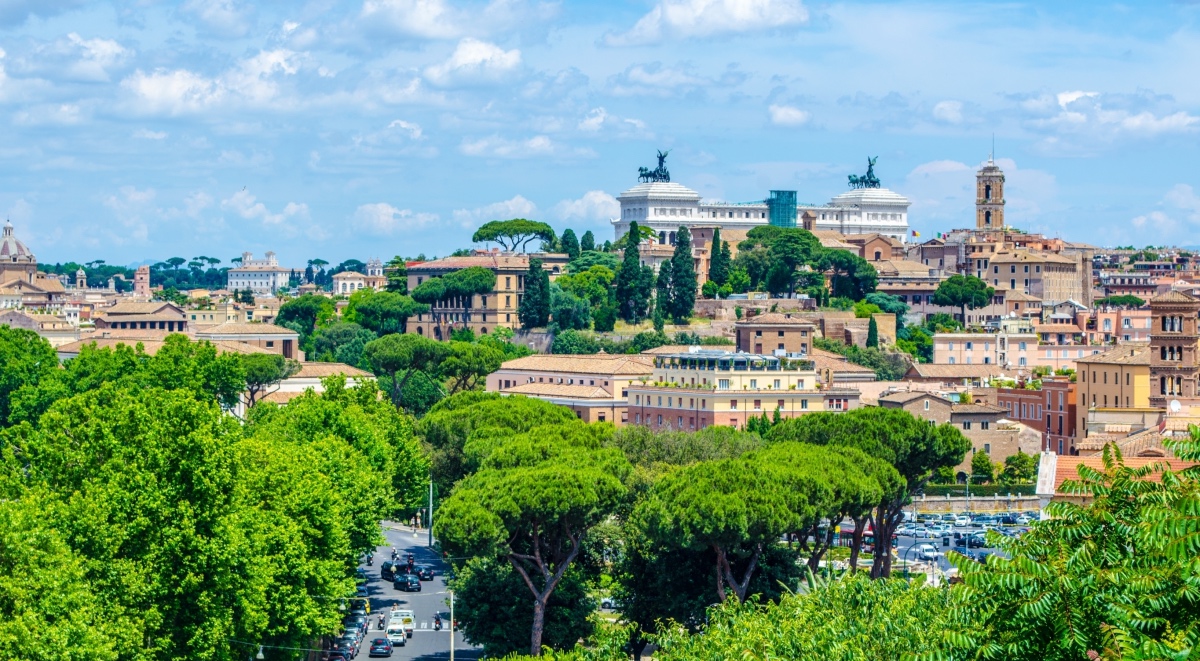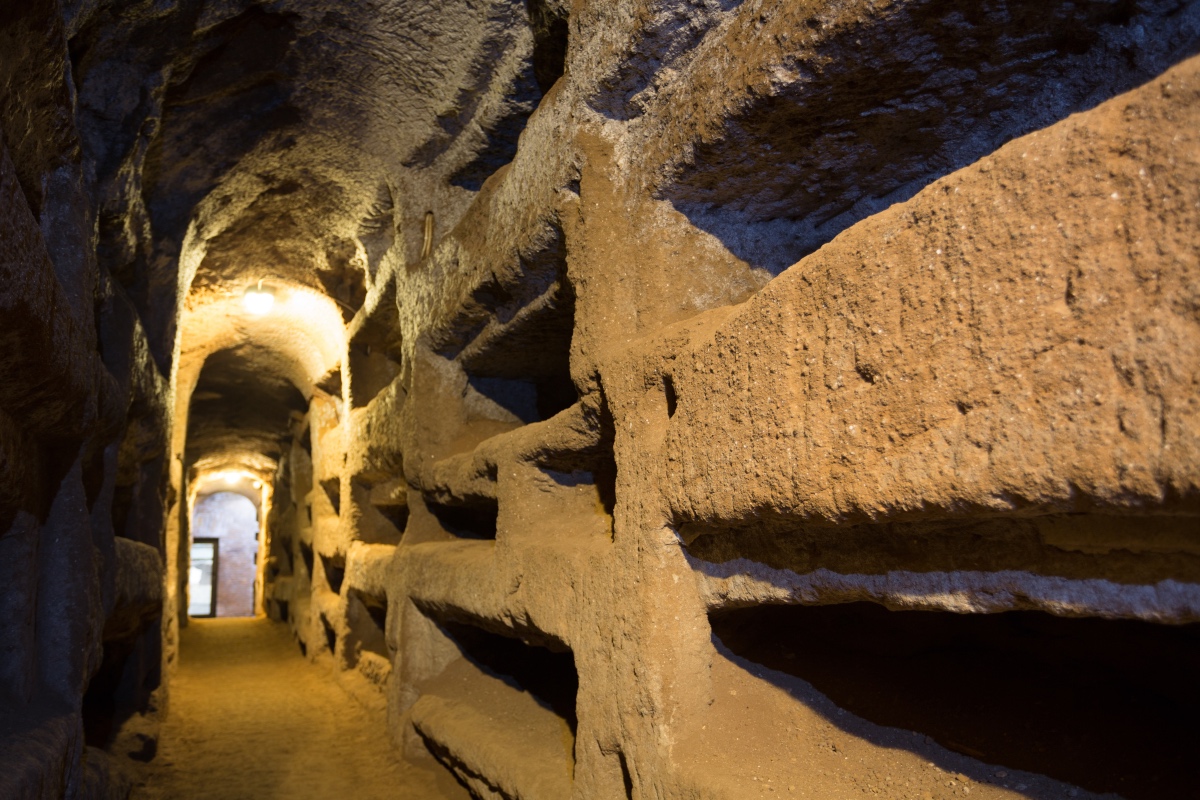
In a city famous for its seven hills, you’re never short of lofty vantage points affording you splendid views when you visit Rome. The Eternal City has had its highs and lows: the ancient empire rose and made its presence felt across a huge swath of the globe and then declined and finally fell; from its ashes sprang the Holy Roman Empire with its own golden ages and eventual demise.
Likewise, so goes the terrain of the city. Consisting of layer upon layer, there’s as much to see in the down-below of Rome, from crypts and catacombs to secret tunnels and entire subterranean ancient villas, as there is above.
From above: Aventine Hill
Begin your walking tour of Rome by taking the high road up the famous Aventine Hill, which provides one of the most breathtaking, natural panoramic views of the city. Perched far above the Tiber River on the Aventine is the Giardino degli Aranci, the Orange Garden, a well-tended public park that gets its name from the bitter orange trees that grow there.
Access the park by ascending one of the twisting roads of this affluent district, which includes five churches and numerous, large and colorful villas. Or climb the stairs of the terraced front face of the hill and traverse the remains of an ancient fortress that was built near the imposing structure of the basilica of Santa Sabina, a Dominican Order church and monastery that rests on the site of a temple dedicated to Juno.
Next, take a short stroll along the flat summit of the Aventine to a sunny piazza bordered by a monastery and a lengthy garden wall on the Tiber side of the square. Stop in front of a pair of weathered green doors, which conceal a most delightful secret: crouch slightly, peer through the keyhole, and enter a magical, hidden garden at the end of which is a miniscule St. Peter’s Basilica, bathed in sunlight and framed in an archway of greenery inside of the garden. The garden and the piazza beyond the doors is the property of the Knights of Malta, an order of Catholic warrior knights who famously fought in the Crusades. The site is off limits to visitors, but the extraordinary view through the keyhole is not!
A 20-minute walk through the botanical garden on the northern end of the Aventine Hill and down alongside the long grassy field of the ancient Circus Maximus brings you to the Basilica of Saints Giovanni and Paolo. Somewhat hidden away among major attractions like the Colosseum, this early Christian church rests on the site where the two apostles were said to have been martyred and buried. An effort to locate their remains unearthed an unexpected archaeological treasure: what is known as the Case Romane del Celio, 20 ancient Roman houses in a sublayer of the hill known as the Celio complete with masterfully produced, colorful frescoes and mosaics. The complex of once-luxurious homes dates to around the second century CE. It’s best to book a tour of this site.
From below: The catacombs

Among the structures in the Case Romane del Celio is a Christian house church where early worshippers attended services in secret while the religion was still illegal (until 313 CE). Early Christians also worshipped in the subterranean cemeteries called catacombs, usually but not always evading arrest by Roman soldiers by hiding among the dead.
Take a bus or taxi along via Appia, the ancient Appian Way, just beyond the city walls of southeastern Rome to the remarkable Catacombs of San Callisto or Saint Callixtus. These catacombs are named after an early deacon and eventual saint, Callixtus, who was appointed by early third century Pope Zephyrinus to administer the cemetery on land donated by affluent Christians.
The vast complex of family and individual tombs descends four stories below ground and covers around 90 acres. Upwards of 500,000 people were buried in the catacombs through two centuries, including 16 popes and numerous martyrs, the most famous being Saint Cecilia, whose remains along with those of the popes have since been relocated.
Visitors to the Catacombs of Saint Callixtus may only see certain areas of the catacombs on hour-long guided tours but the experience is fascinating and well worth the climb back up to the bright, golden Roman sunshine.
Embracing Rome’s delightful opposites
Remember, whatever you choose to experience in Rome, you can find equally delightful opposites: from bucket-list sights to out-of-the-way hidden gems, spectacular hilltop views to deep, dark secrets below. Make time to explore and wander during your Roman holiday to fully appreciate the depth and complexity of the Eternal City.


